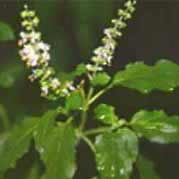 |
| a home away from home |
| HOME FEEDBACK TELL A FRIEND WEB SITE DESIGN CAREER WITH US CONTACT US |
![]() Festivals
Festivals
![]() Durga Puja
Durga Puja
![]() Associations
Associations
![]() Learn Bangla
Learn Bangla
![]() Beng. Marriage
Beng. Marriage
![]() Baby's Name
Baby's Name
![]() Art & Craft
Art & Craft
![]() Great Indians
Great Indians
![]() Beauty Care
Beauty Care
![]() Recipe
Recipe
![]() Astrology
Astrology
![]() Beng. Section
Beng. Section
![]() Bengal
Bengal
![]() Calcutta
Calcutta
![]() Tiger
Tiger
![]() Beng. Calendar
Beng. Calendar
![]() Wallpapers
Wallpapers
![]() Movie
Movie
![]() Music
Music
![]() E-Card
E-Card
![]() Shopping
Shopping
![]() E-Puja Room
E-Puja Room
![]() News
News
![]() E-mail
E-mail
![]() Month's Events
Month's Events
![]() Weather
Weather
![]() Chat
Chat
![]() Travel
Travel
![]() Join Us
Join Us
![]() Advertise
Advertise
![]() Website links
Website links
![]() Link to us
Link to us
![]() Guest Corner
Guest Corner
![]() Services
Services
![]() WebSite Design
WebSite Design

TULSI
The Basil plant is a tender low-growing herb that is grown as a perennial
in warm, tropical climates. Originally native to India it is known as
'Tulsi' meaning 'incomparable' and has immense religious importance. A
Hindu household is considered incomplete if it doesn't have a tulsi plant
in the courtyard.
Apart from its religious significance it is of great medicinal value, and is a prime herb in Ayurvedic treatment.Tulsi's extracts are used in ayurvedic remedies for common colds, headaches, stomach disorders, inflammation, heart disease, various forms of poisoning, and malaria. The tulsi plant is even known to purify the atmosphere and also works
as a repellent to mosquitoes, flies and other harmful insects. Tulsi plant grows wild in the tropics and warm regions. Its aromatic leaves are round-shaped with ridged edges. The Tulsi flowers are small, reddish-purple in colour, present in small compact clusters on cylindrical spikes.The fruits are small and the seeds are reddish-yellow in colour.
Three main types of Tulsi plants are generally; Rama tulsi (Ocimum sanctum = O. tenuiflorum), Krishna tulsi (Ocimum sanctum = O. tenuiflorum) and Vana tulsi (Ocimum gratissimum). Basil is still considered the "king of herbs" by many cookery authors.
GREAT INDIANS || BENGALI SECTION || BENGALI MARRIAGE || BABY'S NAME || WALLPAPER || BENGAL || WEATHER || TRAVEL
MOBILE WALLPAPER || E-CARD || MOVIE || WEBSITE LINKS || ASSOCIATIONS || SHOPPING || ASTROLOGY || MUSIC || BEAUTY CARE
TIGER || NEWS || GUEST CORNER || FEEDBACK || LINK TO US || FOR ADVERTISING || SERVICES || CONTACT || BENGALI CALENDAR
Graphics, Sound or content copied or produced in part or whole in any media will be illegal.
Persons or websites caught using our material will be penalized.
Privacy Statement || Copyright
Copyright ©1999-2014 BANGALINET.COM